10 Common Garden Insect Pest and how to Control
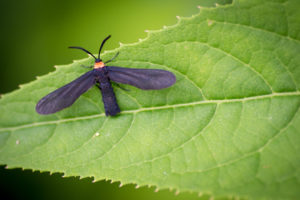
As a landscape and garden professional for the past 25 years I have worked both outdoors and on the interior and a common thing I have discovered is the presence of garden insect pests that can become a real nuisance. I have worked on many beautiful garden projects and have seen that even in the most best-kept gardens insect pests will invade.
When garden insect pests show up at our doorsteps or should I say in our gardens we should treat them immediately when spotted. But in order to treat them, we must first identify them to employ the proper measures to eradicate them. There are many chemicals on the market which can be used to combat garden insect pest however, we must be very careful when handling these pesticides because if mishandled can cause more damage than good.
Some pesticides should not be used where children and pets are present because of their high level of toxicity therefore it’s best to use pesticides that are labeled safe to be used in the home garden. Also before using these pesticides we should read the manufacture’s direction and apply accordingly for the best results.
Beneficial insects
Although there are many garden insect pests there are also other garden insects that are known as beneficial insects, what these good guys do (beneficial insects) is police or protect our gardens by feeding on garden insect pests. Beneficial insects will not harm our garden plants but if we apply harmful pesticides they will not only eliminate the bad but the good bugs or beneficial insects as well. As we continue our discussion on garden insect pests well will also be looking at how to protect our beneficial insect friends so they can be safe while ridding our gardens of insect pests.
1. Mealybugs
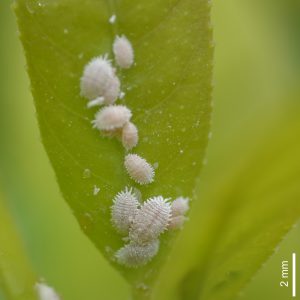
This soft body insect can be found in just about any garden type including the interior, mealybugs have a white cottony appearance with tiny legs. These garden insects best will remain in a fixed position on garden plants and moves very slowly especially when disturbed. They can be found on the leaf’s undersides but if the infestation is really bad they will be visible on the leaf’s surface and other plant parts.
Mealybugs have piercing-sucking mouthparts and dose damage by piercing the plant’s leaves and extracting the fluids which will lead to yellowing and browning of the leaves followed by leaf drop. The use of insecticidal soap or horticultural oils will bring control.
2. Aphids
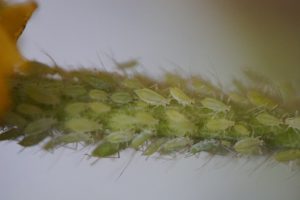
Aphids can become a real menace and dose the seem damage as mealybugs with their piercing-sucking mouthparts, Aphids are tiny and have a pear shape body. The colors of these insect pests are yellow- light green and some even appear to take on a somewhat orange color. Aphids feed on the tender or new plant growth. What is interesting however about aphids is they are the easiest to eliminate among garden pests. A strong spray of water from a garden hose will knock them off garden plants causing elimination or applying the same chemicals to treat mealybugs will work as well. Also, Talstar and Upstar will help to bring control.
3. Spider mites
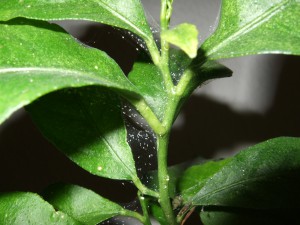
Spider mites are very tiny insects and can hardly be seen with the naked eye, plants that are attacked by spider mites take on a grayish dusty appearance along with the presence of spider webs the adult spider mite is oval-shaped with a pale or reddish-brown color. Some may also appear to be yellow-orange or even green in color.
If your garden plants are showing the symptoms of spider mites a simple but yet effective test will further help in discovering these pests. Take a sheet of white paper and place it under the plant leaves followed by shaking the leaves. If spider mites are present you will see tiny dots moving around on that white sheet of paper, you may also feel them crawling around on your hands. The use of insecticidal soap will bring control.
4. Whiteflies
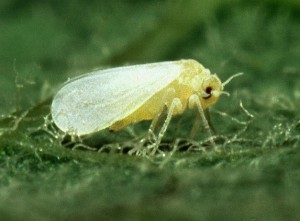
Whiteflies are a beautiful milk-white but don’t let that fool you because these insects have been known to cause server damage. I remembered between 2011-2012 there was a serious whitefly outbreak that was devastating the ficus benjamin plants, just about everywhere I went across the county, properties that grew these plants suffered greatly.
During this time I was also faced with the challenge of seeking ways to eliminate these insects on the properties that I cared for. It was a challenge but myself along with other professionals in this industry was able to bring control to our various properties. Whiteflies hides on the leaves underside, if disturbed they will quickly dislodge from the plant but just as quickly as they dislodge they will reattach again, whiteflies also dose damage as these other listed pests. Insecticidal soaps, horticultural oils, botanical insecticides, etc… have proven to give good results.
5. Scales

There are many species of scales, the body of these insects are tiny and looks like and armor. Scales can be found on the undersides of plant leaves. But if the infestation is serious they will also be seen on the leaves surfaces and other parts of the plant including the stem. Scales don’t move they remain in a fixed position but this is their feeding position where the damage is being done by sucking the plant’s sap or fluids.
Scales like other sucking insects will secrete a surgy substance known as honeydew. This honeydew will attract ants and will also cause a black substance to form known as sooty mold. Sooty mold takes away from garden plants by causing them to look dirty and unattractive. These molds will also interfere with photosynthesis, the process by which garden plants manufacture their foods. If measures are not taken to eliminate scales garden plants will lose their luster looking sickly. Horticultural oil and insecticidal soap will help in eliminating the insect (scales) that’s responsible for this.
6. Thrips

Thrips are some of the most challenging common garden insects to deal with. I have had the distasteful experience of seeking to rescue a bed of hibiscus from the clutches of these menaces which took me several weeks to bring control. The saliva of thrips is known to be toxic spreading disease from plant to plant.
When it comes to these garden pests we can’t sleep on them but begin treatment right away because if left unchecked will turn your dream garden into a nightmare or graveyard. Though thrips are small they vary in size and color from black, reddish-0range, dark brown, translucent white, pale, and other bright colors.
Thrips cause yellowing and browning of the leaves followed by leaf drop, some pesticides that have been known to control thrips include, Upstar, Orthene, Talstar, Bayer Advanced 3 in 1 Multi-Insect Killer.
7. Colorado potato beetle control
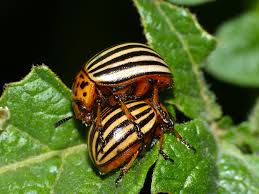
The Colorado potato beetle can be found found in edible gardens where crops such as tomatoes, potatoes, and eggplants are grown. The eggs of these beetles are laid on the undersides of the leaves, the female has been known to lay as much as 400 eggs in 4-6 weeks period, that’s a lot of eggs that pose a threat to gardens once the eggs hatch.
Their damage can cause a decrease in crop yield and in serve cases will cause the death of the entire plant which means when they are first spotted measures must be taken to rid your garden of them right away. Chemicals such as Azadirachtin can bring control to and extend but Bacillus Thuringiensis Var Tenebrionis is very effective against beetles when they are young therefore it is best to treat them at this stage.
8. Slugs and Snails
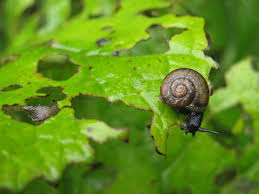
Slugs and snails are among the chewing garden pests, they will eat holes in the leaves, strip the edges, or sometimes consume the entire leaf or the whole plant if it’s herbaceous or has very soft tissues. Another evidence of slugs and snails in the garden is their clear trail of mucus. Snails and slugs may move slow but if left unchecked can cause serious damage.
Control measures include keeping your garden free of rotting debris including leaves and other plant material, old pieces of board and rocks will attract them. The use of snail baits or handpicking them and throwing them into a bucket of soapy water will bring elimination. For more on slugs and snails refer to the link that has been provided.
9. Crucifer flea beetle control
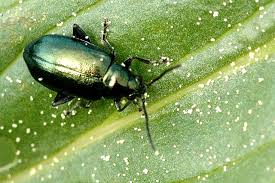
These beetles are small and dark jumps like fleas and congregate mostly in edible gardens. The adult beetles will chew round holes in the leaves, the larva however will feed on the roots. Ensure that all leaf litter is raked up along with other debris, the use of neem oil, Rotenone, Pyrethrin, etc.. has been known to be effective.
10. Leafhopper
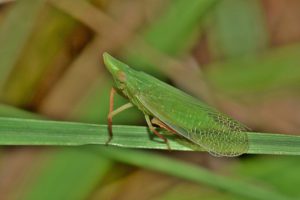
The leafhopper is among the group of garden insect pests that does damage by piercing the plant’s tissues and feeding on the sap. These garden insect pests have been known to cause damage to crops. The leafhopper has also been known to be many colors but the most common colors are brown and green.
The nymphs or the babies feed on the leaves undersides, garden plants that are attacked by leafhoppers become stunted, the leaves may turn a pale yellow. Infected leaves will also develop spots or specks that are yellow. Yellow sticky traps or applying Pyrethrins will bring control to these garden insect pests.
Protecting Beneficial Insects
While it may be a challenge to keep beneficial insects from being caught in the friendly fire we should do all that we can to prevent them from becoming casualties of war. I know that you want to rid your garden of insects pest because who wouldn’t want to reap a good harvest or stand back and be proud of that garden that is growing healthy and in full bloom.
But before you reach for that harmful chemical remember those beneficial insects, why not have a talk with your nurseryman about a product that can be used on the bad guys while having no effect on the good guys. Another way to eliminate the bad guys is to follow the instructions in this post on homemade remedies.
The use of biological control is a great way to eliminate garden insect pests while bringing balance to our ecosystem. This approach is beneficial to our environment and safe around children and pets. Look for organic sprays that may have some labeling of being safe to use with limited effect on beneficial insects.
Installing your garden plants in the right location and giving them what they need will keep them growing nice and healthy so even if insect pests invade you will be in a position to take measures that will protect beneficial while promoting a clean environment.
Mechanical control involves the practice of using garden tools to get rid of garden insect pests. For example, if a single stem or a small portion of your plant is infected or has a few bad bugs why not use a hand pruner and remove that part where the bad bugs are feeding this way you won’t have to use pesticides keeping your garden environment safe for children, pets and the good bugs as well.
The final word on common garden insect pests
Thanks so much for staying with me to the end, I know that a lot has been said and I am now sure that you have a better understanding of some common garden insect pests and how to control them. This list of garden pests is just a few among many that invade our gardens but from what we have discussed you are now armed and dangerous to win the war on the bad guys while protecting the good guys bringing balance to our ecosystem in a safe manner that is a win-win for us.
About the author
Norman loves being in the garden, both at home and for his job....
he is 'Natures Little helper' being outdoors, growing his vegetables and flowers from an early age.
Now having spent over 22 years in the profession he want to give some of his knowledge to others...
his vast array of hints and tips you will find scattered over this site will help you no end growing plants in your garden.

This is very interesting, i loved the beneficial insects, actually is like the goods guys and bad guys
I know in this way are the organic pesticides (insecticides is more appropriate for this article) working, you just release a kind of microorganisms, a good one, and they actually act as beneficial insects, eating the parasites or bad guys and saving the leaf
Thanks for sharing this knowledge
Beneficial insects are good to have around, this is a natural way to rid gardens of insect pests. Thanks so much for sharing your thoughts also. Have a good day!!
Hello there, thanks a lot for sharing this wonderful piece of information here with us. I must say i really did enjoyed going through your article as it contains detailed information’s one needs to be aware of and i think these tips on how to control them would be of great help. Thanks for sharing this
You are welcome and it is good to know that there are methods we can use to win the war on garden insect pest. Thanks again for stopping by and all the best to you.
Helooo, this is really a nice and educating topic on common garden inspect pest. In one way or the other we may experience common garden insects pest, it’s advisable they are controlled. I major garden insects pest that I encounter a lot is Slugs and snails (chewing insects pest). Thanks for giving a control measure on this, I will definitely put it to test.
Hello, I am so glad to know that I could help. Wishing you much success and please let me know how it goes. All the best to you.
Hello there, thank you for this very detailed and informative post on common garden insect pest, I must say this post is really timely for me as this is exactly what I am looking for as my plants are suffering from various form of attack by insects especially the Colorado potato beetle that has destroyed my tomato and eggplants, but i’m grateful I now know how to control it, thanks for sharing.
Hello, I am happy that you found my post helpful. There is nothing like garden insect pests trying to eat our crops before we have time to harvest them. Wishing you success as you put this method in place and please let me know how it goes.
I want to see that I’m so much Happy to stumble upon this awesome review on 10 common garden insect pest and how best to control them. I’ve been going for garden at the backyard for quite some months now and at various times had insects troubling my plants,,, didn’t know how to go about controlling them cuz I have tried series of means but to no avail.. I look forward to trying this control measures you’ve given out here thanks a lot for sharing..
I am so happy to help, garden insect pests can become a real problem but with the right knowledge we can win the war wishing you all the best please let me know how it goes.